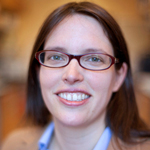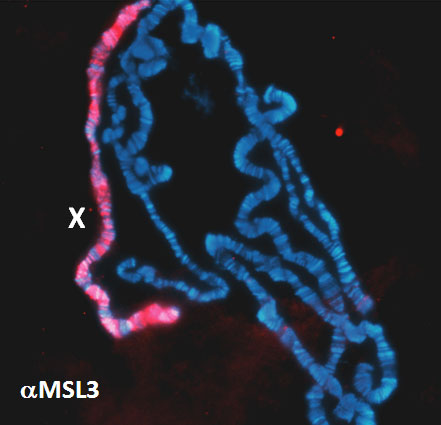Mapping a Path to Genetics' Next Frontier
The Human Genome Project famously identified the 20,000-plus genes determining everything from people's eye color to their likelihood of contracting cancer. It also left its mark on Erica Larschan, a 2011 Pew Biomedical Scholar and assistant professor of biology at Brown University. As researchers were fleshing out that map of genes, Larschan was in college, homing in on her own scientific destiny.
“It was so exciting,” Larschan says of the effort, which began in 1990 and was completed in 2003. Scientists on the project “thought they were going to have everything figured out,” she recalls.
Larschan began figuring out her own path while pursuing an undergraduate degree in biochemistry from Wellesley College and working summers in a cancer lab at Harvard Medical School. And in earning a Ph.D. in genetics from Harvard and continuing training at Brigham and Women's Hospital, Larschan discerned the fate of her research goals: to uncover connections between gene expression and disease.
She now runs her own research lab focusing on transcription factors, molecules that bind to DNA sequences. In so doing, they orchestrate which genes are turned on and which are silenced in various cells types and under an array of conditions, such as health and disease.
As one of the 22 early-career scientists named Pew Biomedical Scholars in 2011, Larschan studies the role of transcription factors in a phenomenon that allows male organisms to survive with only one X chromosome. While females have two copies of the X chromosome, males have one X and one Y chromosome, which houses only genes associated with male fertility.
At first blush, the males' lack of a second X chromosome ought to be lethal. Human cells have 46 chromosomes—two sex chromosomes and 22 paired sets of so-called somatic chromosomes, which contain genes related to non-reproductive bodily systems. Organisms need both copies of each somatic chromosome pair to live.
So what keeps males alive in the absence of a backup X chromosome? In a telling model, male fruit flies manufacture a specialized transcription factor called MSL (short for male-specific lethal—as they would die without it).
|
|
|
|
This, Larschan's lab has discovered, enables them to double the genetic expression from their sole X chromosome—an advantage that might also appear in human males. Her group employs novel techniques to measure the moment-to-moment activity of genes on fruit flies' X-chromosomes. MSL, they've found, helps enzymes to copy those genes.
If—in the distant future—that discovery proves applicable to humans, Larschan foresees that biomedical scientists might better understand and one day treat diseases such as cancer or schizophrenia, which are associated with abnormal gene regulation.
"But for now, Larschan's work has already distinguished her as a scientific pioneer ..."
... earning her a Presidential Early Career Award for Scientists and Engineers in 2012. That honor, bestowed by the President, recognizes researchers who take risks at the frontiers of science and technology.
Larschan passes that same eagerness to innovate on to her students. For instance, she teaches a transcription seminar which zeroes in on an initial step of the mechanism that allows all cells to create proteins from the blueprints in their genes.
In exposing genetics' next frontier to her students, Larschan hopes to share the excitement for science the Human Genome Project instilled in her—and that her Pew award now nurtures. “It's fun to get people started on a career in scientific inquiry,” she says.
See more profiles here.
Since 1985, Pew's biomedical programs have been supporting promising beginning researchers in the health sciences—particularly young investigators with innovative approaches and ideas. This article is the second in a “Biomedical Researcher of the Month” series highlighting Pew's biomedical programs.













